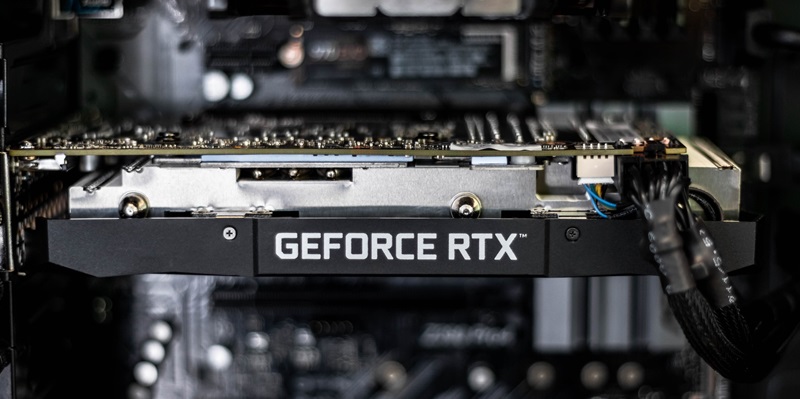NVIDIA, the renowned technology company, has reached a remarkable milestone with over 500 games and applications leveraging their groundbreaking RTX technologies. Introduced in 2018, NVIDIA’s RTX technologies, including ray tracing and DLSS (Deep Learning Super Sampling), have revolutionized the gaming industry, pushing the boundaries of graphical realism and performance.
Overview of RTX Technologies
NVIDIA’s RTX technologies, unveiled in 2018, have transformed the landscape of gaming visuals. Ray tracing, a method that simulates the behavior of light in real-time, allows for incredibly accurate reflections, shadows, and global illumination. DLSS, on the other hand, is an upscaling technology that harnesses the power of AI to enhance both frame rates and image quality.
DLSS technology
DLSS, which stands for Deep Learning Super Sampling, has emerged as one of the most impactful features of NVIDIA’s RTX lineup. By utilizing artificial intelligence, DLSS upscales lower-resolution images to higher resolutions while maintaining exceptional image quality. This not only enhances the visual experience but also boosts framerates, delivering smoother gameplay even on demanding titles.
Battlefield V and RTX
One of the notable mentions in the RTX evolution is the title that kick-started this gaming revolution, Battlefield V. This game served as the debut showcase for RTX, demonstrating ray-traced reflections that created highly realistic and immersive environments. Battlefield V demonstrated the potential of RTX technologies and laid the foundation for the future of gaming visuals.
DLSS benefits
DLSS has brought forth significant improvements across various gaming titles. With DLSS implemented, games have witnessed a doubling in frames per second (FPS), ensuring a seamless and enhanced gameplay experience. By dynamically adjusting the image quality, DLSS strikes an optimal balance between performance and visual fidelity, leaving players astounded by the realism delivered without sacrificing FPS.
Quake II RTX
NVIDIA’s commitment to advancing RTX technologies is evident in the implementation of full RT effects in Quake II RTX. This classic title was brought back to life with stunning visual upgrades, incorporating global illumination, shadows, and reflections powered by real-time ray tracing. Quake II RTX served as a testament to the transformative nature of RTX, offering players an unparalleled gaming experience.
DLSS 2.0 in Minecraft RTX
Among the notable integrations of DLSS is its integration into Minecraft RTX. With DLSS 2.0, Minecraft RTX witnessed significant improvements in both image quality and game integration. The inclusion of DLSS brought enhanced sharpness and clarity to the voxel-based world of Minecraft, elevating the already beloved game to new heights in terms of visual fidelity.
Cyberpunk 2077 and RTX
One of the most highly anticipated titles to showcase the capabilities of RTX technologies was Cyberpunk 2077. With DLSS 2 support, Cyberpunk 2077 pushed the boundaries of graphical realism and tested the bleeding-edge capabilities of RTX. Players were treated to unparalleled visual fidelity, with DLSS 2 optimizing performance while maintaining exceptional image quality. It was a definitive moment for RTX technology, setting new standards for future game titles.
DLSS 3 and FPS boosts
The evolution of DLSS continued with the introduction of DLSS 3, which focused on frame generation for FPS boosts in real-time and path-traced games. This groundbreaking technology brought further improvements, enhancing players’ gaming experiences by delivering smoother gameplay at higher frame rates. DLSS 3 cemented its role as a game-changer, showcasing NVIDIA’s commitment to consistent advancements in graphics technology.
Adoption of RT and DLSS
The widespread adoption and popularity of RTX technologies are evident. In recent titles, over 95% of RTX 40 GPU owners enabled RT or DLSS features, highlighting their recognition and appreciation among gamers. This high adoption rate signifies the impact RTX technologies have had on the gaming industry, as players eagerly embrace the enhanced visual and performance capabilities provided by NVIDIA’s innovations.
NVIDIA’s achievement of reaching over 500 games and applications utilizing their RTX technologies marks a game-changing era in graphical technology. The introduction of ray tracing and DLSS has pushed the boundaries of gaming visuals, delivering unprecedented levels of realism and performance. From Battlefield V’s ray-traced reflections to Cyberpunk 2077’s bleeding-edge capabilities, NVIDIA has consistently showcased the potential of RTX technologies. The future looks promising as NVIDIA continues to innovate and set new benchmarks, further revolutionizing the gaming industry with their groundbreaking RTX technologies.

